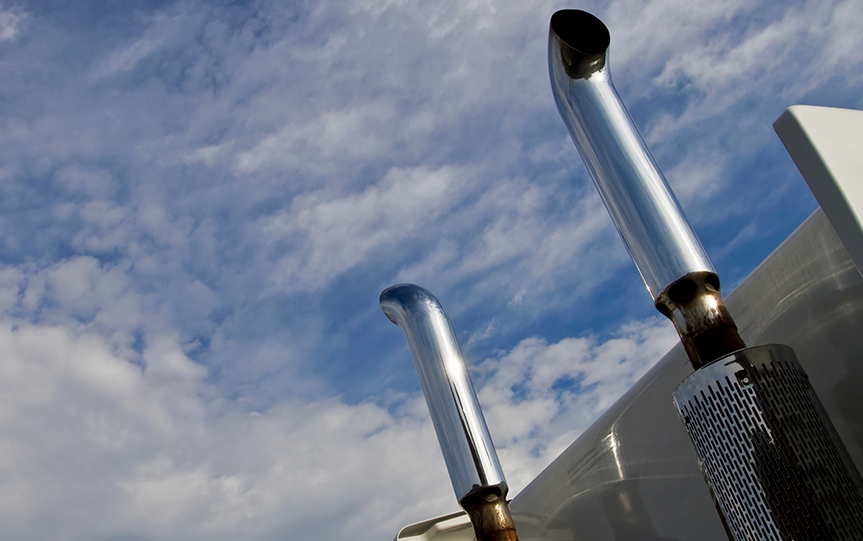
Corporations are under immense pressure to reduce their contribution to global carbon emissions, yet in 2021 just one in five of the 2,000 largest publicly listed companies committed to net-zero policies. It’s clear that a wake-up call is needed, and field service operations are on the front line to deliver it.
This requires moving from traditional digital planning tools to ones that reduce waste and optimize technician mileage, such as advanced artificial intelligence that creates a unique service fingerprint for continuous sustainable optimization.
The transportation industry is the largest contributor to U.S. emissions, so it has an important role to play in the transition to net-zero. In just one year, U.S. vehicles produce 1,098 million metric tons of carbon dioxide equivalents — almost one-fifth of the nation’s total CO2 emissions. Reducing drive time is a crucial way to reduce the nation’s carbon footprint.
While more service organizations are adopting a remote-first approach, reducing the number of on-site visits by field technicians, companies agree that there’s no foreseeable future without an on-site component. Field-service organizations need to determine when service visits are necessary, and optimize resource utilization and route scheduling, in order to reduce fuel consumption, energy waste and carbon emissions.
That’s easier said than done. It’s a tough challenge to match team resources with fluctuating demand over multiple time horizons. Often the management of customer expectations during unexpected delays must take priority over perfectly optimized resource utilization.
AI-powered planning, scheduling and optimization (PSO) technology can save field service organizations many hours of time, countless miles and hundreds of thousands of dollars, all without sacrificing the customer experience.
Real-time optimization, scalability and built-in intelligence are key when it comes to workforce planning and scheduling. The AI technology embedded in PSO software finds and fixes invisible inefficiencies that businesses can’t see. It automates the optimization of workforce planning, scheduling and routing for a more efficient and environmentally friendly version of field service.
The PSO automatically schedules service time slots based on resource availability, and prioritizes jobs depending on their level of urgency. As a result, the most pressing and time-sensitive jobs can be scheduled as quickly as possible, without interfering with pre-existing ones. The right resources become available at the right time for the right job without the risk of double-booking, or the need for technicians to make multiple trips.
In the case of sudden changes in demand, or requests for additional resources due to illness, for example, a PSO can immediately absorb incoming workload imbalances by automating capacity and the movement of resources. In the process, it minimizes the number of trips a technician must make, and maximizes operational efficiency in real time.
The dynamic route optimization function of PSO technology assigns jobs to technicians based on the most efficient routing. It uses AI to calculate the time needed to complete each task based on existing data for each technician, generating an appropriate timeframe for jobs that are more complex or have a larger scale. Routing is further optimized based on geographic parameters, such as operating in an urban versus rural catchment area, and assigning jobs that are as close together as resource availability will allow. This ensures that the order of jobs is both time- and route-optimized. Businesses implementing sophisticated PSO systems have reduced average technician travel time by 35%-50%.
The reduction in travel time and mileage also has a significant environmental impact. Consider a field service organization with a workforce of 1,000 technicians who complete 780,000 jobs a year, covering 14 million miles. With medium-sized trucks averaging eight miles per gallon, and every gallon of gasoline releasing 22 pounds of CO2, the typical field service business can produce up to 38,500,000 pounds of CO2 each year. After deploying a PSO and cutting travel time by 35% to 9.1 million miles, they can reduce annual carbon emissions by 65%, to just 13,475,000 pounds per year.
Along with these important emission reductions come significant cost savings. For example, if fuel prices average $5 per gallon, a 35% reduction in travel time from planning and scheduling optimization could provide a fuel cost saving of $3,087,000 per year.
In addition, because optimization engines are self-learning, businesses can realize further cost savings from the PSO as they tailor the system and it becomes more central to their unique operations.
With environmental, social and governance (ESG) compliance high on the business agenda amid ever-growing pressure to meet net-zero targets, a PSO has the potential to optimize field service operations, improve cost savings and enable reductions in the carbon footprint, while maintaining a first-class customer experience.
Sarah Nicastro is vice president of customer engagement at IFS, and creator of Future of Field Service.







